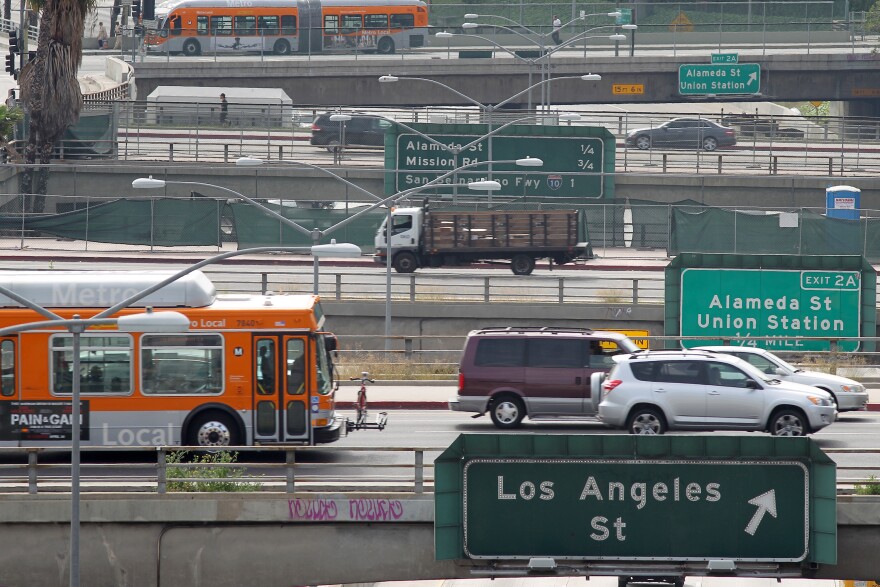With our free press under threat and federal funding for public media gone, your support matters more than ever. Help keep the LAist newsroom strong, become a monthly member or increase your support today.
LA County environmental report card a 'surprise and a disappointment'

Researchers at UCLA have spent the past year trying to answer this question: how well is L.A. County doing at saving energy, cleaning up the air and addressing climate change? The answer is: not nearly as well as it thinks.
“Despite tremendous leadership in California and in the region on a wide variety of air quality and greenhouse gas emission reduction issues, we’re seeing in L.A. County that we’re still a C-student,” said Mark Gold with UCLA’s Institute of the Environment and Sustainability.
“We thought the grades would have been better than they were,” Gold said. “There has been so much great policy, so many great programs. But to not see that result yet in really tremendous reductions in energy use and greenhouse gas emissions was something that was a surprise and a disappointment.”
The researchers broke the report card into five categories – building energy use, transportation, renewable energy sources, greenhouse gas emissions and air quality – and assigned a grade to each one.
Transportation got the worst grade: C-. L.A. County residents are driving 3.5 percent more than they did in 2005 and taking public transit 6 percent less. Carpooling dropped 24 percent. Diesel sales jumped 16 percent in a single year, between 2014 and 2015, which is not good for air quality and public health because diesel exhaust is a known carcinogen.
Building energy use scored a C. Energy and natural gas consumption in buildings remained constant between 2006 and 2015. Vast energy disparities exist between wealthy and poor neighborhoods: in 2010, richer areas used more than 10 times more energy per capita than the average person, despite living in more energy efficient, newer buildings.
Air quality and human health also scored a C. Researchers noted that the progress made towards improving the South Coast’s worst-in-the-nation ozone, or smog, stalled during the drought. They emphasized the need to continue replacing heavy duty diesel trucks, the largest contributor to smog.
With a C+, efforts to cut greenhouse gas emissions in L.A. County have been a mixed bag. Some cities, like L.A., have cut theirs by nearly 20 percent below 1990 levels. But most cities in L.A. County have no way of knowing how much their emissions have changed, because only seven of them had climate action plans in 2016 and are not tracking that kind of data.
Renewable energy sources received the highest grade: B. Researchers noted that a handful of L.A. County cities are making progress towards achieving the state’s 2020 goal of getting a third of their energy from renewable sources, including Glendale, Burbank, Pasadena and LA. Other cities, like Cerritos, purchased zero renewable energy in 2015. The L.A. County Board of Supervisors’ recent decision to create its own utility, called community choice aggregation, could enable more county residents to purchase renewable electricity.







